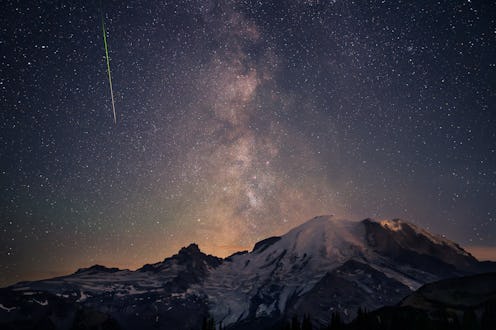Life
NASA Just Released Recordings Of Deep Space & They Sound Like Literal Space Demons

If you're already missing the spooky Halloween spirit, you're in luck. This week, NASA released eerie space sounds that are guaranteed to make you shiver as much as any horror movie worth its fake blood budget. You might think that the vacuum of space is utterly silent, and for the most part, that's true. But the tagline of the famous science fiction movie Alien — "in space, no one can hear you scream" — isn't entirely accurate. The unfathomably vast swathes of nothingness between celestial bodies still contain matter like plasma waves, gas clouds, and radio emissions, some of which can carry sound waves. The catch is that these sounds aren't audible to the human ear... until NASA gets its hands on recordings of them.
In honor of Halloween, the aerospace agency gathered up 22 sounds recorded in space. While the human ear would normally be unable to detect them, scientists took the time to convert the radio emissions into a list of audio tracks for your spooky listening pleasure. In a press release, they didn't go into detail about how that works, but the process of turning raw data into something audible is known as "data sonification." NASA explained:
"Soaring to the depths of our universe, gallant spacecraft roam the cosmos, snapping images of celestial wonders. Some spacecraft have instruments capable of capturing radio emissions. When scientists convert these to sound waves, the results are eerie to hear.
In time for Halloween, we've put together a compilation of elusive 'sounds' of howling planets and whistling helium that is sure to make your skin crawl."
First up on the list is the sound of NASA's Juno spacecraft entering the space just outside of Jupiter's magnetic field, an area known as the bow shock, into the field itself. Here's what you should know about Jupiter's bow shock: First, it forms a boundary between the planet's magnetosphere and the solar wind flowing past at approximately one million miles per hour, creating something like a sonic boom. Second, it sounds exactly like an alien spacecraft landing in your backyard. According to the South China Morning Post, the following clip is about two hours of electric field signals compressed into ten seconds.
Then there are the interstellar plasma sounds collected by the Voyager spacecraft, which are akin to a static-y television. Playing in a darkened room. In a house that was abandoned by a family in the middle of the night 30 years ago.
If you're not spooked yet, turn your attention to Saturn's radio emissions gathered by the Cassini spacecraft. You don't need to be all that familiar with The Twilight Zone to recognize that the clip would be the perfect accompaniment to an episode about a lonely robot lost in space.
In comparison, the radio waves collected from our own planet's atmosphere are nearly cute — which is nice, because the rest of the playlist is downright unsettling. Considering one track is titled "Beware of Jupiter's Largest Moon Ganymede," I'm pretty sure the scientists who arranged the audio clips were playing right into that fact. Other clips include the radar echoes from the surface of Saturn's moon, Titan, lightning on Jupiter, and the sound of space debris striking the Stardust spacecraft as it passed through the tail of the comet Tempel 1.
In conclusion, space is terrifying, and we're lucky to live on Earth, where we enjoy nice weather and fluffy kittens instead of 400-year-old hurricanes and clouds of sulfuric acid. (Looking at you, Venus.) If you're interested — and trust me, you absolutely should be — you can check out all 22 clips on Soundcloud. Consider it inspiration for the soundtrack for your next haunted house.
Check out the entire 'What's Up, Boo?' series and other videos on Facebook and the Bustle app across Apple TV, Roku, and Amazon Fire TV.